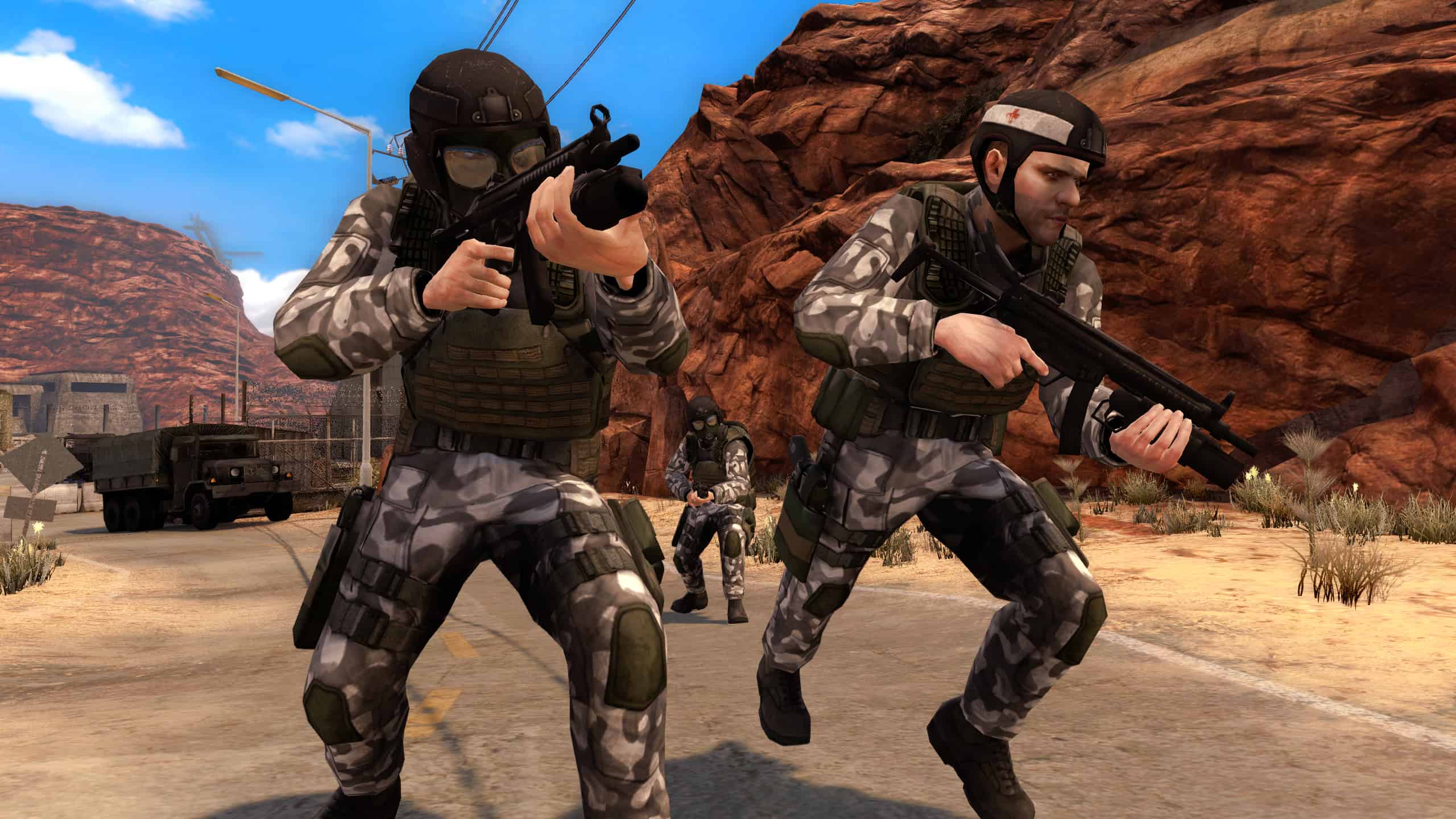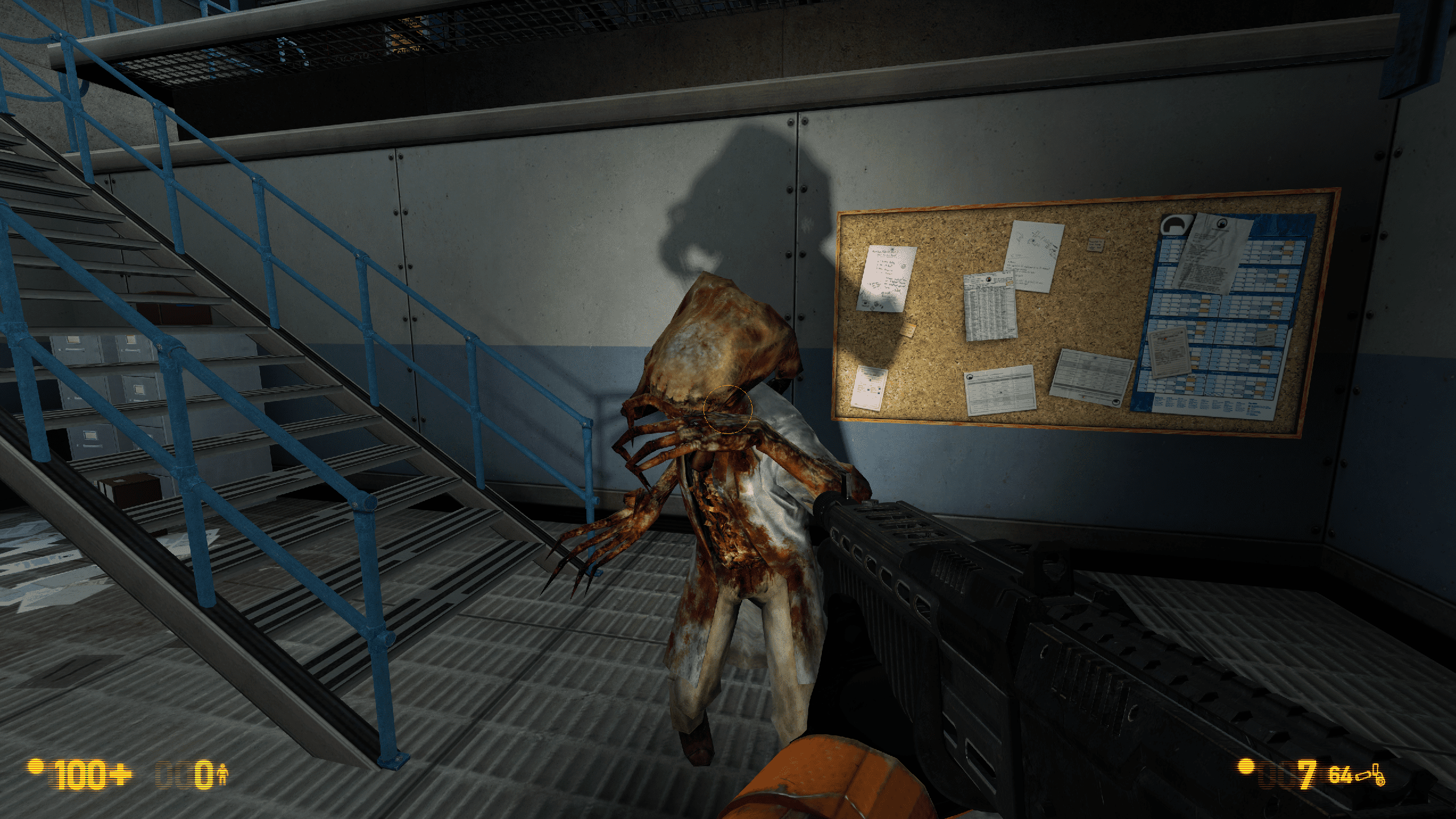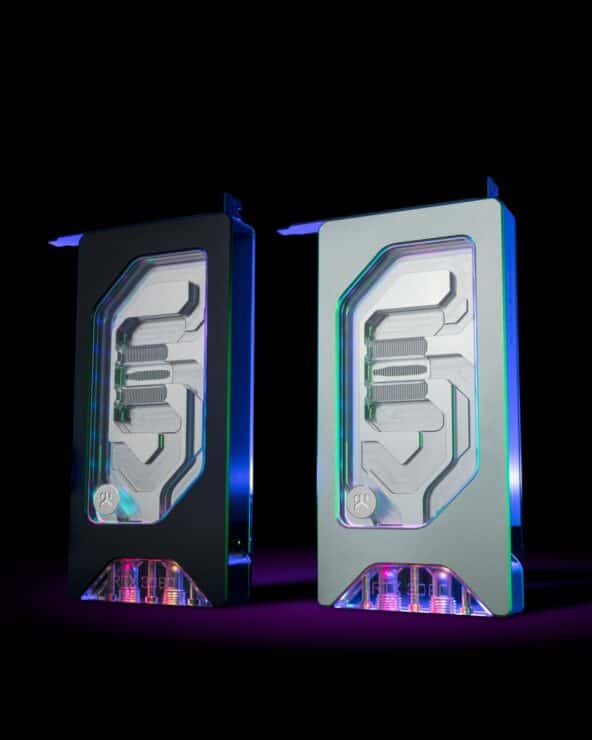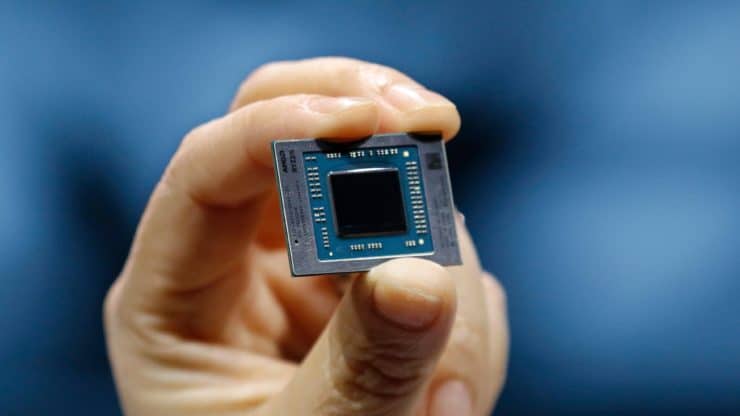
What is it? A fan-made Half-Life remake.
Expect to pay £15/$20
Developer Crowbar Collective
Reviewed on RTX 2080 Super, Intel i7-9700K, 16GB RAM
Link Official site
One morning in the New Mexico desert, a 27-year-old theoretical physicist turns up late for work. The next thing he knows monsters are spilling out of portals from another world, turning his colleagues into zombies, and generally making a mess of the top secret Black Mesa Research Facility. The Half-Life series is really just one long bad day at work, and Black Mesa is a Valve-approved, albeit entirely fan-made, chance to relive Gordon Freeman’s disastrous morning—but with prettier visuals, combat and physics lifted from Half-Life 2, bigger levels, and other upgrades.
Black Mesa sticks closely to Half-Life in terms of structure. You take the tram into work, watch in horror as the resonance cascade floods the facility with aliens, dodge headcrabs in the office complex, clash with the HECU Marines, deal with giant tentacles in the blast pit, fight through a warzone on the surface, navigate the radioactive Lambda Core, and finally visit Xen. But everything is huger, more detailed, and more dramatic, with production values approaching Half-Life 2, which breathes new life into the Black Mesa Incident.
See how Half-Life’s Xen compares to the remake in the video above.
Some levels have been remixed too, with redesigned, or in some cases completely new, puzzles and set-pieces. So even if you know Half-Life inside out, there’ll still be some surprises here. However, purists may question some of developer Crowbar Collective’s design and aesthetic choices—and some things are so detached from the source material that it occasionally feels like an entirely new game. Black Mesa is not a 1:1 remake, so it’ll never feel as authentic as revisiting the original. But it’s a fresh, modern, and lovingly made take on a landmark moment in PC gaming.
Half-Life is still great, but feels increasingly stiff and dated as the years roll relentlessly on. But Black Mesa being built on the foundations of Half-Life 2, borrowing its weapon handling and chaotic physics simulation, makes for a much more dynamic and engaging first-person shooter. And thanks to an abundance of movable and breakable objects, and devilish traps that frequently cause explosive chain reactions, the stricken research facility has never felt more reactive, unpredictable, or dangerous.
The stricken research facility has never felt more reactive, unpredictable, or dangerous.
But let’s talk about Xen, because this is where Black Mesa makes its biggest statement. In the original Half-Life, Freeman’s arrival on Xen was, for most players, something of an anticlimax. It’s not as bad as people remember, but this otherworldly expanse of floating platforms, bizarre alien flora, and grubby textures is a low point for the game, with frustrating low-gravity platforming and a tedious boss battle against a giant testicle. But after years in development and several delays, Black Mesa achieves the impossible and makes Xen one of the best parts of the game.
The new Xen is stunning to look at, and feels genuinely strange and otherworldly—as this cosmic place-between-places should. Shortly after teleporting there, Freeman finds himself gazing across a vista of weird floating creatures and a swirling, vivid nebula. Comparing both versions of Xen side by side, it’s almost comical how much of an improvement this is. What was once a rather lifeless, dreary place now sizzles with colour and detail, and the contrast between the comparatively banal computers, concrete, and vending machines of the facility has even more impact.

The new Xen levels loosely follow the original game in terms of theme and structure, but they’re also a radical departure. The platforming is more fun and dramatic, and there’s a lot more to discover in terms of world-building and environmental storytelling. Some locations have even been transformed entirely. In the Interloper chapter, Freeman encounters enslaved Vortigaunts in a factory-like cloning facility; however, in Black Mesa this section has been replaced by a bigger, much more evocative new location that really highlights the true misery of the Vorts’ tragic enslavement.
The fight with the Gonarch is vastly more exciting too, with some really incredible animation and visuals, which elevate Half-Life’s lamest boss battle to something quite extraordinary. And I’ll let you see the Nihilanth for yourself, but it’s safe to say that the new version is an improvement over the big floating baby of old. Some meandering level design and slightly unnecessary puzzling aside, Xen is a triumph—both in terms of its confident, dazzling art direction, and how it finally gives us an ending to Freeman’s first adventure that doesn’t feel wildly inferior to everything leading up to it.
It’s amazing that something as elaborate and well made as Black Mesa is, essentially, a fan project. And doubly so that Valve allowed them not just to make it, but sell it on Steam too. This is a professionally made game, and arguably the best way to experience the events of the Black Mesa Incident on a modern gaming PC. For some the original will always be the best version of Half-Life, but this is a superb reimagining that uses the underlying systems of Half-Life 2 to great effect. Fighting through the Black Mesa facility as it falls to pieces around you is every bit as thrilling as it was back in 1998, and now the story ends with a bang instead of a whimper.
Read our review policy
A quality remake that broadens the scope of the original and massively improves its final chapters.





More Stories
Firefighting Simulator – The Squad review — Through the fire and the shame
Maid of Sker review — Death in the slow lane
PHOGS! review – It’s a dog-help-dog world out there